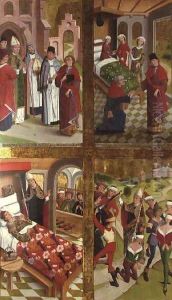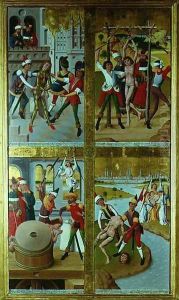Hermen Rode Paintings
Hermen Rode was a late Gothic painter from the Northern Renaissance period, active primarily in Lübeck, Germany, during the second half of the 15th century. While the exact date of Rode's birth remains uncertain, it is generally believed that he was born around the year 1440. Similarly, his death is not precisely documented, but he is thought to have died around 1504.
Rode was one of the most significant artists in Lübeck during his time, and his work reflects the transition from the Gothic style to the early Renaissance. There is little known about his early life or training, but his stylistic influences suggest that he may have traveled or at least been exposed to the works of artists from the Low Countries and perhaps even Italy. His artwork includes altarpieces, panels, and frescoes, which were often rich in religious symbolism and featured vivid colors and elaborate detail.
One of Rode's most famous works is the St. Luke Altarpiece (1484), which is notable for its detailed representation of the Saint's attributes and the use of perspective, a relatively new technique at the time. This altarpiece also reflects the increasing interest in naturalism and the human figure that was characteristic of the early Renaissance. Rode's paintings are also known for their intricate landscapes and use of gold leaf, which added a divine luminosity to his religious subjects.
Rode's legacy is evident in the number of works attributed to him and his workshop that are still in existence today. These works can be found in various churches in Northern Germany as well as in museums. Despite the scarcity of concrete biographical details, Rode's contribution to the art of Northern Renaissance Germany is well recognized, and his works continue to be studied for their technical skill and their place in the evolution of Northern European painting.

